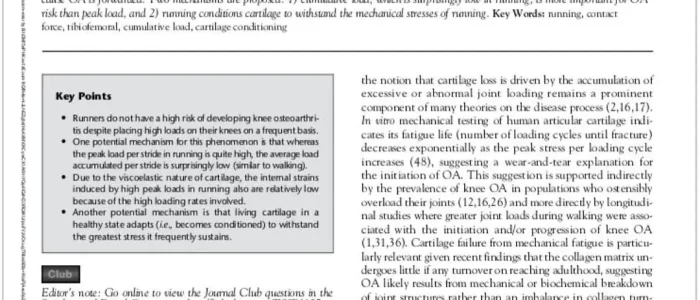I decided to try reading another article from another favorite podcast of mine, Running Medicine with Bryan Heiderscheit. The topic is pretty self explanatory. Here are some main points:
⠀⠀⠀⠀⠀⠀⠀⠀⠀
Although peak force in the knee is higher in running the total accumulated load of walking and daily activities may play more of a part in OA development especially since cartilage stiffness is greater with higher load forces versus lower rates as seen in normal gait.
⠀⠀⠀⠀⠀⠀⠀⠀⠀
Example: “An individual can accumulate more total strain by standing for 30 min than by running for 30 min.”
⠀⠀⠀⠀⠀⠀⠀⠀⠀
Cartilage conditioning- the more stress the cartilage is able to sustain, the stronger it gets:
* The ankle experiences greater localized joint stresses than the knee, and ankle OA is much less common than knee OA.
* Healthy knee cartilage tends to be thicker in weight-bearing regions of the joint. ⠀⠀⠀⠀
* Knee cartilage glycosaminoglycan content, which affects lubrication and shock absorption, was greater in recreationally active individuals than in sedentary individuals, and greater in high-volume runners than in recreationally active individuals.
* Running training reduced the response of serum cartilage oligomeric protein, a biomarker for collagen network stability and the incidence and progression of OA, to a bout of walking. ⠀⠀⠀⠀⠀⠀
* Long-term joint immobilization in individuals with leg bone fractures reduced imaging-based indices of knee cartilage quality.
⠀⠀⠀⠀⠀⠀⠀⠀⠀
Other populations with other factors may not have the healthy response to the mechanical loading of running (ie people who are obese, post ACLR, running over 100 miles a week.
Read more here.

